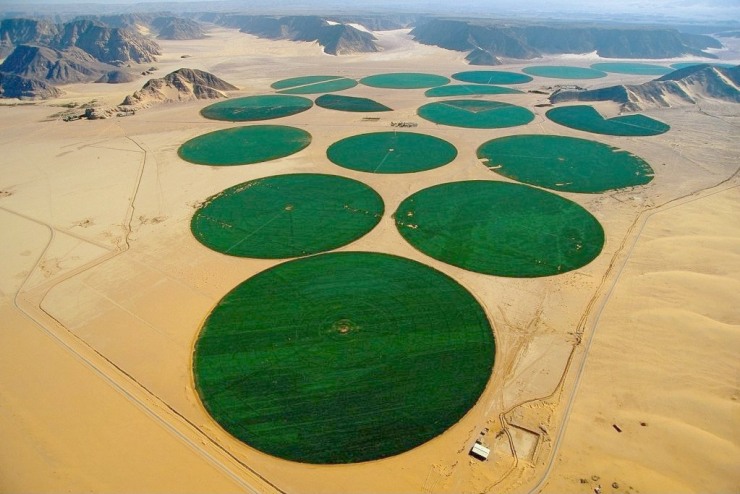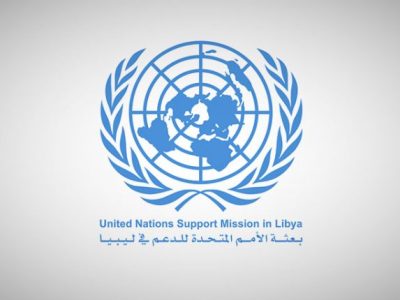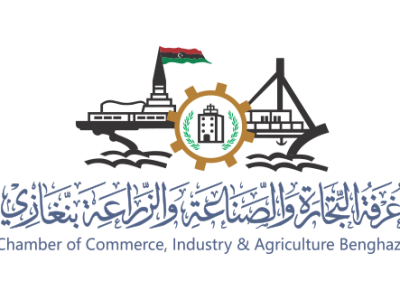Libya Agriculture: Water Scarcity, Policy Reforms, and Pathways to Food Security
Libya’s agriculture has long been underleveraged despite its strategic significance for economic diversification and food security. Recent analyses estimate agriculture’s contribution at 1–2% of Libya’s GDP, while domestic farming supplies just 25% of national food needs. The remainder – especially staples like wheat and barley – must be imported (roughly 80–90% of Libya’s cereal consumption). Only about 12% of Libya’s 15.4 million hectares is arable, concentrated in coastal plains and a few Mediterranean-facing oases. Yet roughly 22% of Libyans still depend on farming for a livelihood, underscoring agriculture’s social importance. This mismatch – between limited output and critical need – means that revitalized farming could significantly cut food import costs and bolster rural livelihoods.
Structural Constraints
Water scarcity is Libya’s most acute agricultural challenge. Over 90% of the country is desert, and only about 4% of its land lies outside arid zones. Almost all rainfall is confined to a few northern regions, and on average only 7% of the territory receives more than 100 mm per year. As a result, farming depends on fossil groundwater pumped through the Great Manmade River (GMMR) network. The GMMR – a decades-old pipeline project to pipe Nubian aquifer water north – now suffers from corroded pipelines, reservoir evaporation and uneven delivery. Without water tariffs or management reforms, waste is common and aquifers risk depletion. At the farm level, most irrigation uses wells or open canals, yielding very low water efficiency.
Weak physical infrastructure compounds these problems. Rural roads, storage facilities and processing plants are often inadequate, and many irrigation installations have fallen into disrepair. For example, Libya installed dozens of large pivot-irrigation systems in its southern oases, but most remain idle due to energy shortages and maintenance neglect. Today only about half of potentially irrigable land is being farmed, reflecting both technical limits and deliberate water conservation. Meanwhile, land ownership is highly fragmented: decades of reform and inheritance rules have left nearly half of farms under 10 hectares, often split into isolated plots. Such small, scattered holdings make mechanization and efficient water use difficult.

Institutional gaps further hold back growth. Libya’s Agricultural Bank (est. 1957) and other agencies exist in name, but credit to farmers has largely dried up. Commercial banks demand 100% collateral (land or buildings) for loans, excluding most smallholders. A recent central bank increase in SME-lending quotas has not translated into new farm loans. Even state-agriculture financing programs now reach only a few projects. At the same time, agricultural extension and training are minimal. The Ministry maintains only about 60 local extension posts, each with one or two staff. Libya’s “pool of skilled agricultural labour is very shallow,” as one study notes. Without agronomic know-how or business skills, farmers struggle to raise yields or add value to crops.
Recent Initiatives and Regional Lessons
Against this backdrop, some new efforts and external examples point the way forward. Domestically, irrigation is being modernized on a small scale. In Fezzan’s Jalu Oasis, for example, a private farm now uses a solar-powered center-pivot sprinkler to irrigate 150 hectares of forage. U.S. firm Valmont has retrofitted multiple such pivots with solar power, allowing year-round irrigation without fuel costs. In early 2025, a USAID-backed AgroLEAP program launched workshops in Fezzan to train farmers on solar-powered irrigation, reflecting a shift toward energy-efficient farming.
On the policy side, FAO and UN projects are targeting water efficiency and value chains. An FAO/EU geospatial project is mapping Fezzan’s water infrastructure from satellites to pinpoint canal and reservoir repairs. UNDP/FAO assessments in the Kufra and Sabha oases have provided some farmers with improved seeds and micro-grants, though cooperatives largely remain inactive. These pilots show how focused aid – if scaled – can raise output.
Experience from North Africa also offers lessons. Morocco, despite its semi-arid climate, has built a large export horticulture sector through technology and policy support. It now farms roughly 40,000 hectares of fruits and vegetables (about half under greenhouse), and its annual exports of these crops exceeded $1.5 billion by 2021. Morocco combined modern irrigation with trade agreements to become the EU’s second-largest tomato supplier. Egypt, too, has specialized in high-value crops: Egyptian citrus exports alone earned over $920 million in 2022/23. These cases suggest that with the right priorities – water-saving technologies, training, and access to markets – even water-scarce countries can expand agriculture as an engine of growth.
Policy Pathways
To capitalize on these insights, Libya needs a coordinated agricultural strategy. First, water and irrigation infrastructure must be rehabilitated. Key sections of the GMMR network and farm canals should be repaired, and open canals replaced with efficient systems (drip lines, sprinkler and solar pumps). Geospatial assessments (as in FAO’s Fezzan project) can target the worst losses. Introducing metered or tiered water pricing would also help curb waste.
Second, access to finance must be expanded. The state could establish a rural credit facility or guarantee fund to underwrite farm loans, allowing banks to relax collateral rules. The Central Bank’s SME-lending quotas (recently raised to 20%) should be enforced and extended to agriculture. Crucially, credit must be paired with support services – for example, loans for solar pumps or greenhouses could require recipients to receive technical training and business-planning assistance.
Third, production and farmer organization must be strengthened. Libya’s sparse network of extension officers (who advise farmers on productivity techniques) should be expanded and better trained. Partnerships with universities, research institutes or foreign experts can bring in needed expertise. Training programs should emphasize high-value, resource-efficient practices (greenhouse cultivation, drip irrigation, integrated pest management and postharvest handling). Farmer cooperatives and chambers of commerce should be empowered to aggregate demand for inputs and help link growers to markets.
Fourth, Libya should develop export-oriented value chains. Regions can specialize: for example, olives and citrus in the northwest, dates and niche fruits in southern oases. The government should lower trade barriers (tariffs, quotas) for these products and assist producers in meeting EU, MENA and sub-Saharan market standards. Parallel investments in cold storage and transport infrastructure will be needed to carry exports abroad.
Throughout, policy coherence is essential: land tenure laws must be clarified to secure investments, and any subsidies (on water, energy or inputs) should be phased out or linked to water-saving outcomes. International partners (the EU, UN agencies, Arab and African development banks, etc.) can support pilot projects and provide technical expertise, but Libyan government institutions must set priorities and lead implementation.
Ultimately, reviving Libya’s farms cannot replace oil revenues, but it can substantially bolster resilience. A stronger agricultural sector would directly shrink the import bill, making Libya less vulnerable to global shocks in food and fertilizer prices. It would also create jobs and incomes in rural areas – anchoring communities in Fezzan, the Nafusa Mountains and elsewhere. Over time, growing more of Libya’s own food and processing crops locally would diversify the economy, stabilize rural livelihoods and support sustainable growth.




